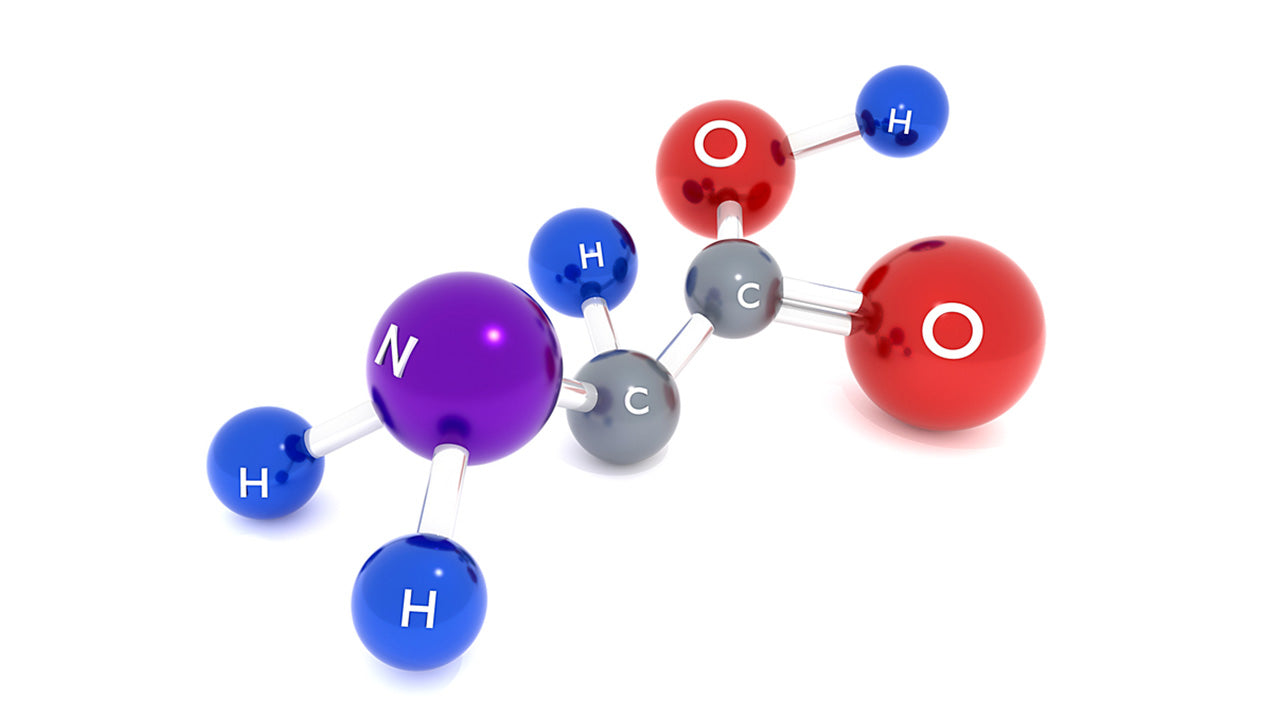What Are Polar Amino Acids?
 By: by Amino Science
By: by Amino Science

When most people think of amino acids, they probably have a vague memory of their high school science teacher discussing the building blocks of protein. But did you know there are actually two types? Known as non-polar and polar amino acids, each group is classified according to its side chains—the shorter chains of atoms attached to the main chain, or backbone, of a molecule.
When amino acids join together to form proteins, only their side chain groups are exposed and able to interact with each other and their surroundings. And the shape of the protein—yes, proteins really do have shape—is determined mainly by the sequence of amino acids in that chain.
The non-polar groups are hydrophobic amino acids, which means they have side chains that are repelled by water. These amino acids are thus located in the protein core, safely tucked away from any contact with water.
In contrast, polar amino acids have hydrophilic side chains, which means they’re actually attracted to water and participate in hydrogen bonding with the highly polar water molecules. Because of this water-loving characteristic, these amino acids are generally located on the surface of proteins, in contact with the aqueous cell environment.
Interestingly, although the hydrophilic nature of polar amino acids means that they readily dissolve in water, they actually have the opposite reaction when placed in oil. In this case, instead of dissolving, the presence of the oil results in the amino acids being attracted to each other.
Which Amino Acids Are Polar?
There are many different amino acids, with over 300 known forms listed in the Practical Handbook of Biochemistry and Molecular Biology. However, only 20 are used to synthesize proteins.
These 20 amino acids are known as the common amino acids. Of these, 10 are considered polar. Including their three-letter codes, these amino acids are:
| Arginine (Arg) |
Histidine (His)
|
| Asparagine (Asn) | Lysine (Lys) |
| Aspartate (Asp) | Serine (Ser) |
| Glutamine (Gln) |
Threonine (Thr)
|
| Glutamate (Glu) |
Tyrosine (Tyr)
|
Contrast these with the non-polar amino acids, which are:
| Alanine (Ala) |
Phenylalanine (Phe)
|
| Glycine (Gly) | Proline (Pro) |
| Isoleucine (Ile) | Tryptophan (Trp) |
| Leucine (Leu) | Valine (Val) |
| Methionine (Met) |
What Are the Properties of Polar Amino Acids?
The polar amino acids can be further broken down into neutral, basic, and acidic groups. And each of these categories functions in a different way.
1. Neutral Polar Groups
As the name suggests, neutral polar amino acids are neither basic nor acidic. This means that their side chains contain exactly one amino group and one carboxyl group (hence the name "amino acid"). The majority of amino acids, both polar and non-polar, are in fact neutral. Of the polar amino acids, asparagine, glutamine, serine, threonine, and tyrosine are neutral.
2. Acidic Polar Groups
If the side chain contains an extra element of carbolic acid, the amino acid becomes acidic. Aspartate and glutamate are acidic amino acids. These forms are also known as aspartic acid and glutamic acid, respectively. The aspartate and glutamate types are the anions, or negatively charged ions, of these substances.
3. Basic Polar Groups
If the side chain contains an extra nitrogen group, the amino acid becomes basic. Arginine, histidine, and lysine are basic amino acids and have a positive charge.
Group Polarity
The degree of polarity is also determined by the functional groups—the groups of atoms that dictate the chemical behavior of a compound—contained in the side chains. In the case of polar amino acids, this refers to the various combinations of amide and carboxylic acid groups that interact to create the neutral, acidic, and basic forms.
What Role Do Polar Amino Acids Play?
Like the rest of the common amino acids, the neutral, acidic, and basic polar groups all perform important functions in the body. Some of these include:
- Blood sugar maintenance
- Immune system support
- Energy production
- Mood stabilization
- Liver protection
- Collagen formation
- DNA metabolism
- Anemia prevention
- Neurotransmitter production

More to Learn
You may have noticed that we mentioned 20 common amino acids earlier but listed only 19. While it may have looked like we were bad at math, we promise we really knew what we were doing when we left cysteine (Cys) out of our lists.
You see, cysteine is classified as only slightly polar and thus doesn’t fit well into either the polar or non-polar category.
In fact, where amino acids are concerned, researchers continue to disagree on several points, including whether certain forms should be considered polar or hydrophilic.
So, as you can see, even though we’ve come a long way in our understanding of amino acids and the important roles they play in the human body, we still have more to learn before we can say we've truly mastered all the intricacies of these essential building blocks of life.

Up to 25% off Amino
Shop NowTAGS: knowledge
Join the Community
Comments (0)
Most Craveable Recipes




 833-264-6620
833-264-6620



















